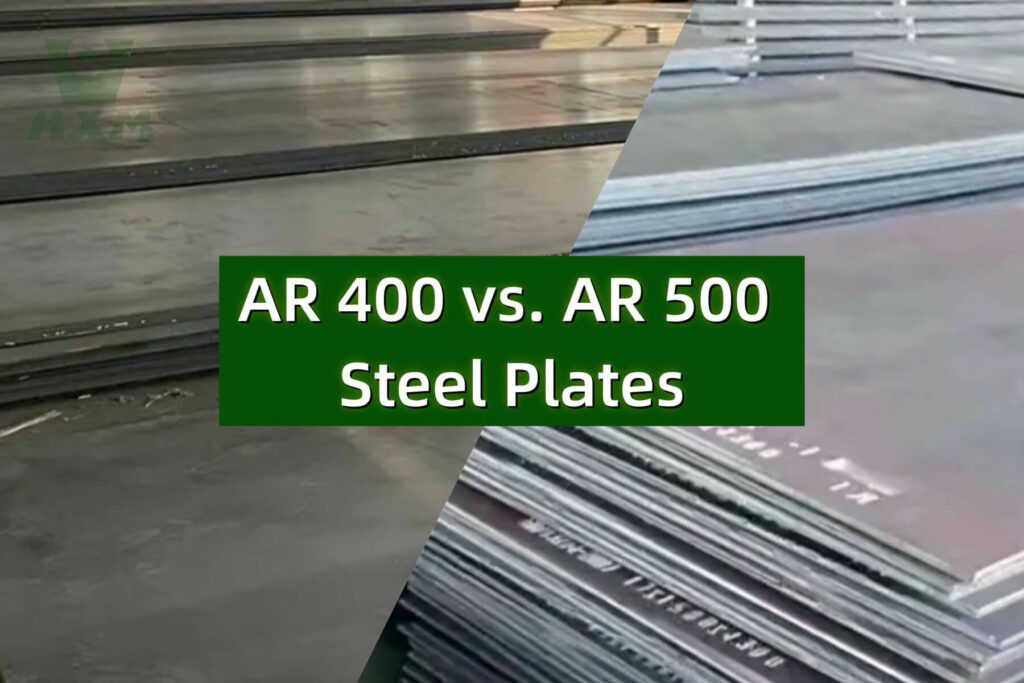AR (Abrasion-Resistant) steel plates, specifically AR 400 and AR 500, are widely used in industries where durability and resistance to wear are essential. These plates are designed to withstand harsh conditions, offering high strength and excellent resistance to impact and abrasion. However, they differ in terms of hardness, applications, and specific use cases. This guide will help you understand the key differences and applications of AR 400 and AR 500 steel plates.

AR steel plates are high-carbon alloy steel plates specifically designed for toughness and wear resistance.
| Property | AR 400 | AR 500 |
|---|---|---|
| Hardness | 360–440 HB (Brinell Hardness) | 460–544 HB |
| Tensile Strength | ~1375 MPa | ~2000 MPa |
| Carbon Content | ~0.3–0.4% | ~0.35–0.5% |
| Aspect | AR 400 | AR 500 |
|---|---|---|
| Hardness | Lower, offering greater flexibility | Higher, providing maximum wear resistance |
| Ductility | More ductile; better suited for applications with impact loads | Less ductile, more brittle under extreme impacts |
| Weight Efficiency | Slightly lighter due to lower density | Heavier, contributing to its durability |
| Price | Generally less expensive | Higher cost due to advanced properties |
When deciding between AR 400 and AR 500, consider the following factors:
Both AR 400 and AR 500 steel plates offer exceptional performance in demanding environments. While AR 400 balances flexibility and strength, AR 500 provides unmatched hardness for extreme abrasion resistance.
For tailored solutions to meet your specific requirements, contact us today to learn more about our range of high-quality abrasion-resistant steel plates. Let us help you choose the right material for your next project!
If you found this article good, feel free to share it on your other social media platforms.
Copyright@2023 Huaxiao Metal Corporation Limited . All rights are reserved
WhatsApp us
Feel free to contact us!
If you need our products, please leave us a message with the specific specifications and quantity through the window on the right!
Reply within 24 hours